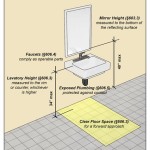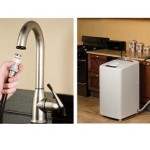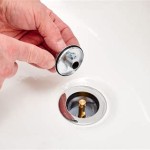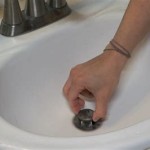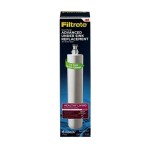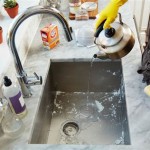Best Rated Under Sink Water Filters: A Guide to Clean and Convenient Water
Access to clean, safe drinking water is a fundamental necessity. While municipal water systems adhere to regulatory standards, contaminants like chlorine, lead, pesticides, and microplastics can still be present, impacting taste, odor, and potentially health. Under-sink water filters offer a practical and efficient solution, providing filtered water directly at the tap without the need for bulky countertop units. This article explores the features, benefits, and performance characteristics of some of the best-rated under-sink water filters available, enabling informed decision-making for improved water quality.
Under-sink water filters are installed directly in the water line beneath the kitchen sink. They provide filtered water on demand through a dedicated faucet, separate from the regular hot and cold water supply. These systems typically consist of one or more filter cartridges housed in a filtration unit. Water passes through these filters, removing contaminants and improving the taste and odor of the water. Installation typically involves connecting the filter unit to the cold water line, mounting the unit under the sink, and installing the dedicated faucet. While some may prefer professional installation, many under-sink filters are designed for relatively straightforward DIY installation.
The overall rating of an under-sink water filter is influenced by several factors, including filtration effectiveness, flow rate, filter lifespan, ease of installation, system durability, and cost of replacement filters. User reviews and independent testing data are vital resources for assessing the performance and reliability of different models. Selecting a well-rated system from a reputable manufacturer ensures a higher likelihood of consistent performance and long-term satisfaction.
Filtration Capabilities and Contaminant Removal
The primary function of an under-sink water filter is to remove contaminants from the water supply. The specific contaminants a filter can remove depend on the filter media used in the cartridges. Common filter media include activated carbon, sediment filters, and specialized filters for specific contaminants like lead or PFAS (per- and polyfluoroalkyl substances). Understanding the types of contaminants present in your water supply is crucial for selecting the appropriate filter. Municipal water reports, often available online, provide information about local water quality.
Activated carbon filters are highly effective at removing chlorine, chloramine, volatile organic compounds (VOCs), and other chemicals that affect taste and odor. Sediment filters remove particulate matter like sand, silt, and rust, improving water clarity and protecting downstream filters from clogging. Some filters incorporate multiple filtration stages to address a wider range of contaminants. For example, a multi-stage filter might include a sediment filter, an activated carbon filter, and a lead reduction filter.
Filters certified by organizations like NSF International and the Water Quality Association (WQA) provide assurance that the filter has been independently tested and verified to meet specific performance standards. These certifications indicate that the filter effectively reduces or removes the contaminants it claims to target. When evaluating under-sink water filters, it is recommended to prioritize models with relevant certifications to ensure reliable performance.
Reverse osmosis (RO) systems, while often more complex, offer a higher level of filtration. RO systems use a semi-permeable membrane to remove a wider range of contaminants, including dissolved solids, heavy metals, and bacteria. However, RO systems typically require a storage tank and produce wastewater, which can be a factor to consider. For individuals concerned about a broad spectrum of contaminants, an RO system might be the preferred choice. However, for many households, a well-designed multi-stage filter provides adequate filtration for common tap water concerns.
Flow Rate and Filter Lifespan
The flow rate of a water filter refers to the speed at which filtered water is dispensed. A higher flow rate allows for quicker filling of glasses, pitchers, and cooking pots. Under-sink filters generally have a flow rate ranging from 0.5 to 2.0 gallons per minute (GPM). Factors affecting flow rate include water pressure, filter media, and the age of the filter. As a filter becomes saturated with contaminants, the flow rate may decrease.
Filter lifespan refers to the amount of time or volume of water a filter can effectively treat before needing replacement. Filter lifespan is typically measured in gallons or months. The lifespan will depend on the filter type, the amount of water used, and the level of contaminants in the water supply. Cartridge replacement frequency can range from every 6 months to every 2 years, depending on the system. It is essential to adhere to the manufacturer's recommended replacement schedule to ensure continued filtration effectiveness and prevent the release of accumulated contaminants back into the water.
Some under-sink filters feature indicator lights or digital displays that provide information about filter status and alert the user when a replacement is needed. These features simplify maintenance and help ensure timely filter replacement. Choosing a filter with a longer lifespan can reduce the frequency of replacements and lower the long-term cost of ownership. However, it is important to compare the cost of replacement filters relative to their lifespan. A filter with a longer lifespan might have a higher upfront cost for replacement filters, but the overall cost per gallon of filtered water may still be lower.
Furthermore, consider the convenience of acquiring replacement filters. Are they readily available online or at local retailers? Some manufacturers offer subscription services that automatically ship replacement filters on a regular schedule, ensuring a consistent supply. The ease of obtaining replacement filters can significantly impact the user experience and long-term maintenance of the system.
Installation and System Design
The installation process for under-sink water filters varies depending on the model and the plumbing configuration. Many systems are designed for DIY installation and come with comprehensive instructions and all necessary hardware. However, some installations may require specialized tools or plumbing knowledge. If you are uncomfortable with basic plumbing tasks, it is advisable to hire a qualified plumber to install the filter.
Before installing an under-sink filter, it is important to assess the available space under the sink and ensure that the filter unit will fit comfortably. Consider the size and shape of the unit, as well as the location of the water supply lines and drain. Some filters are compact and designed for tight spaces, while others are larger and require more clearance.
The system design should also be evaluated for ease of maintenance. Filters should be easily accessible for replacement without requiring complex disassembly. Quick-connect fittings simplify filter replacement and minimize the risk of leaks. The materials used in the filter housing and faucet should be durable and corrosion-resistant to ensure long-term reliability.
The design of the dedicated faucet is another important consideration. Faucets are available in a variety of styles and finishes to complement existing kitchen décor. Choose a faucet with a comfortable handle and a smooth flow of water. Some faucets feature a swivel spout for added convenience. A high-quality faucet will enhance the overall user experience and provide years of reliable service.
In addition to the under-sink filter itself, evaluate the included accessories. Some systems come with installation tools, extra fittings, or water testing kits. These accessories can add value and simplify the installation and maintenance process. Furthermore, consider the warranty offered by the manufacturer. A comprehensive warranty provides protection against defects and ensures peace of mind.
Ultimately, selecting the best-rated under-sink water filter involves a comprehensive evaluation of filtration capabilities, flow rate, filter lifespan, installation requirements, system design, and cost. By carefully considering these factors, consumers can choose a system that effectively addresses their specific water quality needs and provides a convenient and reliable source of clean, filtered water.

The Best Under Sink Water Filter For 2025 Reviews By Wirecutter

Apec Water Systems Wfs Series Super Capacity Premium Quality 3 Stage Under Counter Filtration System 1000 The Home

The Best Under Sink Water Filter For 2025 Reviews By Wirecutter

7 Best Water Filters For Your Sink 2024 Review The Good Trade

Top 10 Best Under Sink Water Filters In 2025

Best Under Sink Water Filtration System Wfla

Simpure 6 Stage Under Sink Water Filtration System

8 Best Under Sink Water Filters Of 2024

Double Undersink Filter Pure Water S Llc

Expert Reviews Best Under Sink Water Filters Of 2024 Youtube

